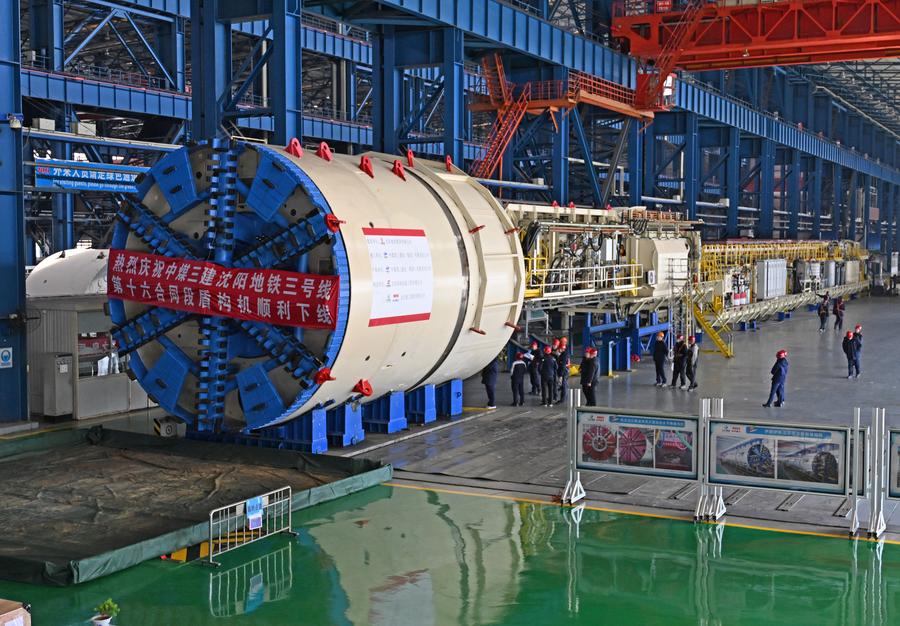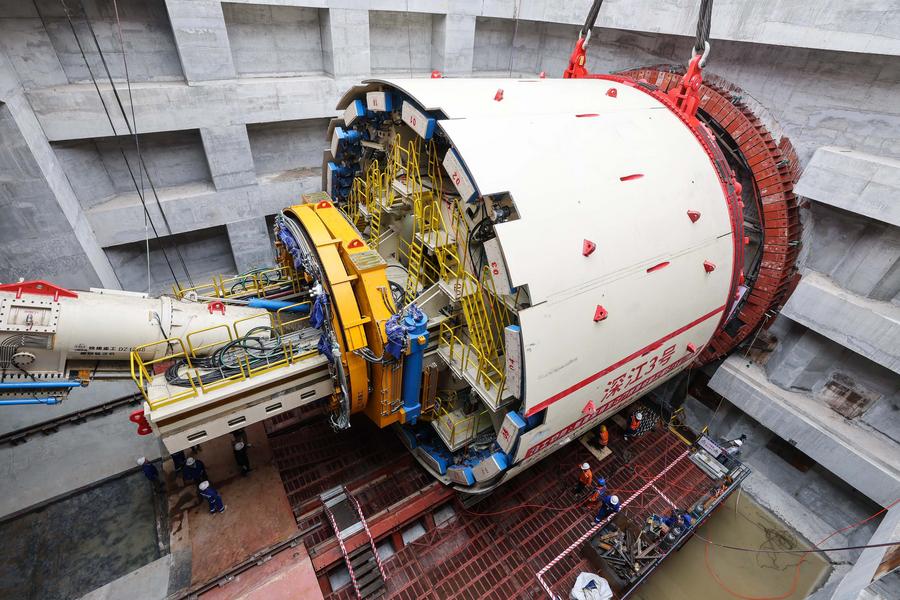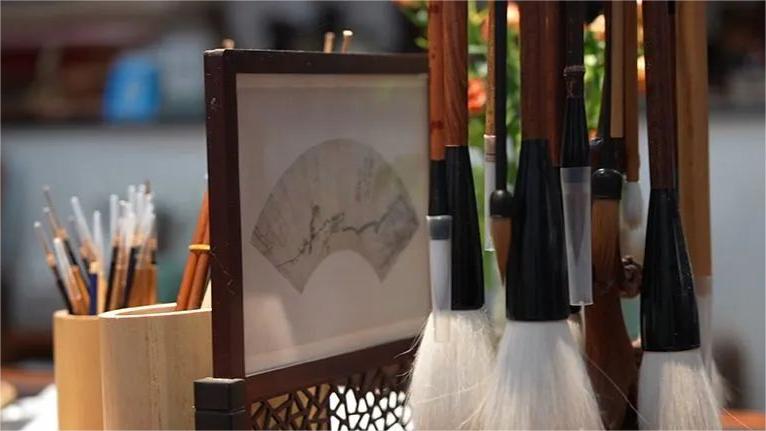Innovative tunneling machines propel China's modern construction

Technicians check a shield tunneling machine before delivery at a factory of Northern Heavy Industry Group Co., Ltd. in Shenyang, northeast China's Liaoning Province, March 21, 2024. (Xinhua/Yang Qing)
BEIJING, June 7 (Xinhua) -- As the construction of modern infrastructure such as railways, highways and water conservancy projects heavily relies on tunnel boring machines (TBMs) or shield machines, Chinese researchers and enterprises have continuously upgraded these tunneling titans with constant technological innovations.
Recently, a main bearing measuring 8.61 meters in diameter for a TBM rolled off the production line in Changsha, the capital of central China's Hunan Province, marking the full coverage of domestically developed TBMs in all diameters, from small and medium to ultra-large.
Independently developed by the China Railway Construction Heavy Industry Corporation Limited (CRCHI), this main bearing is the world's largest and heaviest, weighing 62 tonnes.
MAIN BEARING DRIVES HEAVY MACHINES
TBMs can excavate tunnels using a circular cross-section that drills through various soil and rock strata, seamlessly laying concrete segments to construct tunnels, subway tubes and sewer lines. The main bearing, which operates like the "heart" of a TBM, requires high engineering compatibility and geological adaptability. It is crucial for the development of the entire industrial chain of shield machines.
Awaiting assembly into a TBM, the main bearing can drive a tunnel machine with a diameter of up to 18 meters, the CRCHI stated, noting that it can withstand loads exceeding 10,000 tonnes.
The endurance and reliability of the main bearing are determined by its material, design, manufacturing and testing, and the difficulty level in its development doubles with the increase in size, said Ma Chengbiao, director of an R&D institute under the CRCHI.
The key technology for super-large main bearings in shield machines had long been monopolized by foreign enterprises. In July 2019, the CRCHI started to work with enterprises and colleges for collaborative research on the "bottleneck" technique.
They have been able to resolve manufacturing problems such as deformation control. CRCHI also constructed the world's largest operation simulator to fully evaluate the self-developed main bearing, ensuring its adaptation to complex and harsh working conditions for long-term service.
The successful production of the 8.61-meter diameter main bearing has enabled the domestic enterprise to acquire core technologies across design, materials, manufacturing and testing.
"In the next step, we will try to achieve the intelligent monitoring of the operating status of TBM main bearings," said Ma, adding that he is confident about promoting the deep industrialization of main bearings and expanding their application to wind power and marine equipment.
MULTI-TECHNOLOGICAL INTEGRATION
China's TBM demand has increased with the country's development. Many large infrastructure projects, such as urban subways and railways traversing mountains or waterways, require the technical and operational support of TBMs.
In May this year, China put a new TBM into operation for a railway tunnel at the Pearl River Estuary in southern Guangdong Province. The tunnel, a section of the railway linking the cities of Shenzhen and Jiangmen, stands as the deepest undersea tunnel in China, reaching a maximum depth of 106 meters.
The TBM is equipped with sensors that transfer real-time information to the control center on the ground for accurate monitoring of the operation status of the machine.
"The electromechanical system serves as bones and blood of heavy machinery," said Shao Haidong, developer of the system and an associate professor at the College of Mechanical and Vehicle Engineering of Hunan University. The research team at the college is engaged in evaluating the performance of heavy equipment and formulating management proposals.
A shield machine comprises tens of thousands of components and requires multidisciplinary technological integration, including hydrology, geology, mechanical engineering, soil mechanics, electronics, control systems and sensors.
The new generation of information technology and sensors helps facilitate the continuous and efficient operation of these tunneling machines.

Constructors adjust cutter position of a shield-tunneling machine at the Shenguan tunnel construction site of the railway linking Shenzhen and Jiangmen in south China's Guangdong Province, Feb. 28, 2024. (Xinhua/Liu Dawei)
GROWING PRODUCTION CAPABILITIES
Shield machines originated in Britain, and China commenced TBM research and development in the 1960s. The first set was produced in 1965 and used to bore a tunnel in Shanghai.
Since adopting the innovation-driven development strategy, Chinese enterprises have accelerated the research and development of TBM technologies, achieving breakthroughs in main bearings, large-displacement hydraulic pumps, sealing systems and control systems. Many of these advancements rely on low-carbon and intelligent technologies.
At present, China has eight shield machine enterprises with independent R&D and production capabilities including the CRCHI and China Railway Engineering Equipment Group (CREG), according to the China Construction Machinery Association.
They have introduced various innovative products to 45 countries and regions, including Singapore, Italy, Australia and Brazil, as well as to traditional drilling equipment producers in Germany and France.
A soil pressure balance shield machine, manufactured by the CREG, was used in a metro construction project in Algiers, Algeria. Lauded for its capability to effectively address various technical challenges, the equipment demonstrated impressive performance in terms of boring diameter, speed, depth and managing complex operating conditions.
Photos
Related Stories
- China's tunnel boring machine industry achieves leapfrog development
- Chinese scientists develop new chipless fiber for human-machine interaction
- Tunnel boring machine Dinghai unveiled in C China
- China's first medium-speed high-power ammonia-fuelled engine ignites
- Agricultural machines from E China's Shandong Province enjoy popularity overseas
Copyright © 2024 People's Daily Online. All Rights Reserved.









